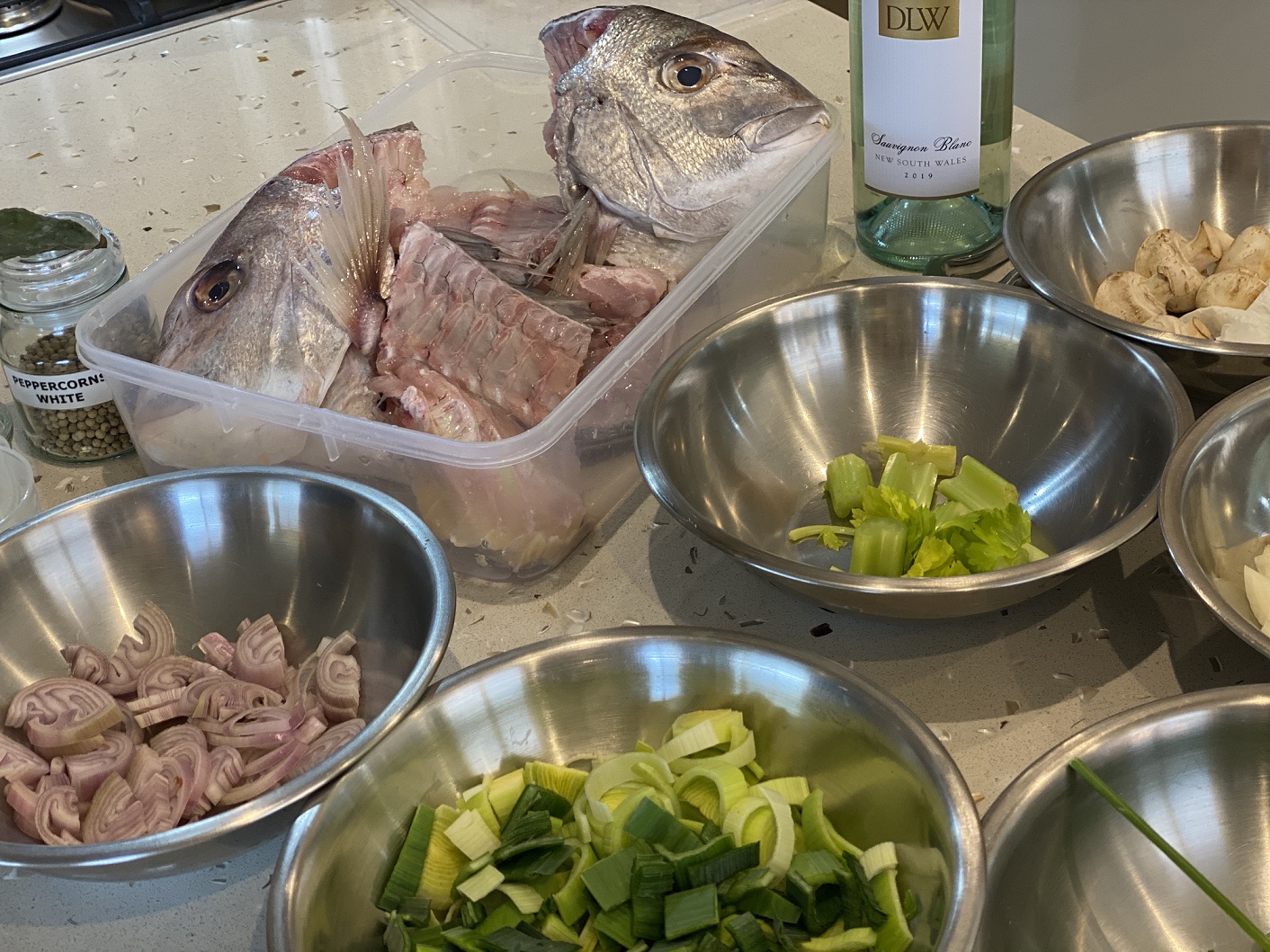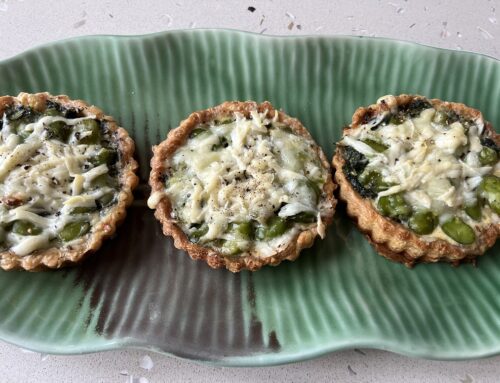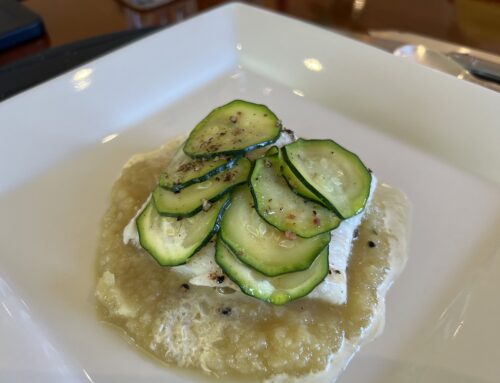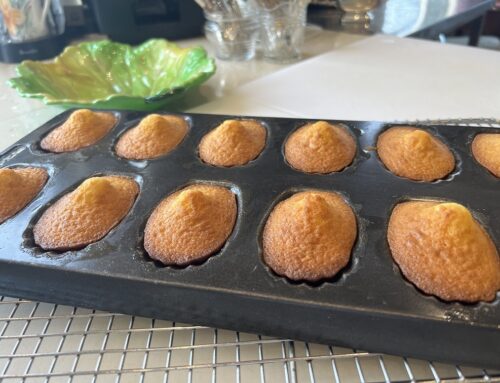Today, in my Cook at Home with Tonya cooking class videos, I made this fish stock at the same time as the crab crustacea stock. The reason for this is that I use the fish stock as a base for the crab stock. At the end of the cooking process, the fish stock is strained, cooled and poured into my freezer containers. Sometimes, I pour the strained stock back into the stock-pot and reduce it to save on my space in the freezer.
To be a good cook you need to master the fundamentals of cookery and stock-making is one of those. The best stock is full of flavour, colour, body and aroma. Good stock is the key to making sensational sauces that enliven your dishes and is the basis for all good soups, braises and stews.
Fish Stock – Fumet de poisson
This fish stock may be made with fish bones and fish heads, cut into 6 cm pieces. If the fishmonger suggests one large fish head, make sure that you wash it well to reduce the blood content around the gills. Makes about 1.2 litres
| Ingredient | |
| 1 onion, finely chopped 1 shallot, finely sliced A few champignons 3 stalks parsley ½ leek, well cleaned and finely sliced a little celery, if desired (some argue against its sweetness) 5 peppercorns |
2 litres water – just enough to cover the vegetables and then the bones – do not use too much 1kg fish bones and heads – bones, heads and skins of 4 whiting will do. ½ cup dry white wine (optional, but the acidity of the wine helps in fish sauces) |
Place all the ingredients, except the fish bones, together into a large pot. Bring the pot to a very slow simmer.
Add the fish bones and pressing a little to see how much space they really take up, make sure they are covered by about 2-3cm ONLY of water. Add the wine.
Bring back to ‘a lazy bubble’, where a few bubbles break the surface every few seconds.
Never boil the stock. The reason: any more than a lazy bubble and you will emulsify the fat into the stock and to stir up the impurities. We want a clear stock and not a cloudy one.
Simmer at the lazy bubble for 20 minutes, skimming as the foam and scum comes to the surface.
Long cooking does not help fish stock, as the bones quickly give off a steely taste to this delicate liquid. Because it does not cook for long, it is best to cut all vegetables small so that they give up their flavour in this minimum time.
Strain, then reduce the stock to the desired syrupiness. Fish stock can be quite gelatinous – it is good practice to have some containers stored as ‘fish stock’ and some as ‘jellied fish stock’ so you can choose according to how it will affect the recipe that it is to go into.
Fish stock may be frozen.






